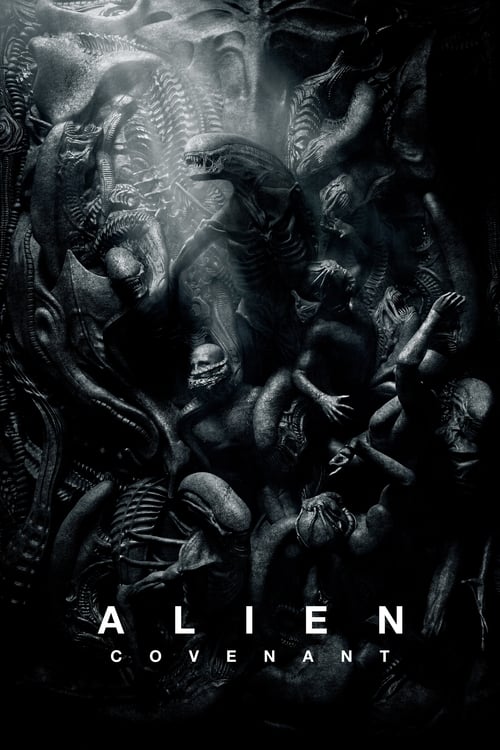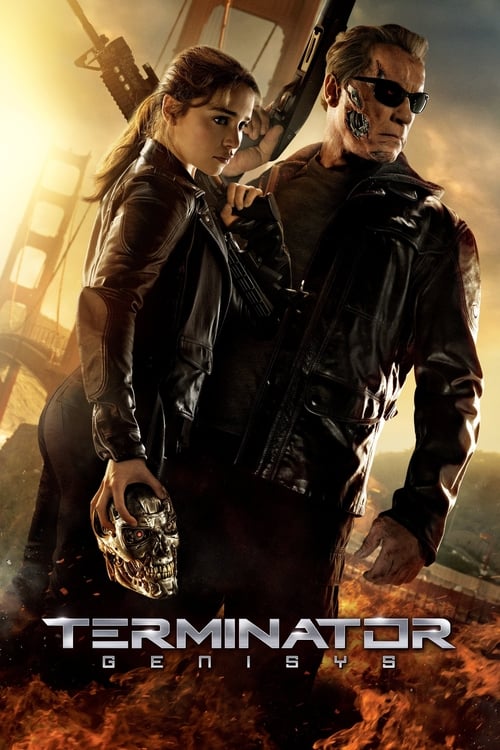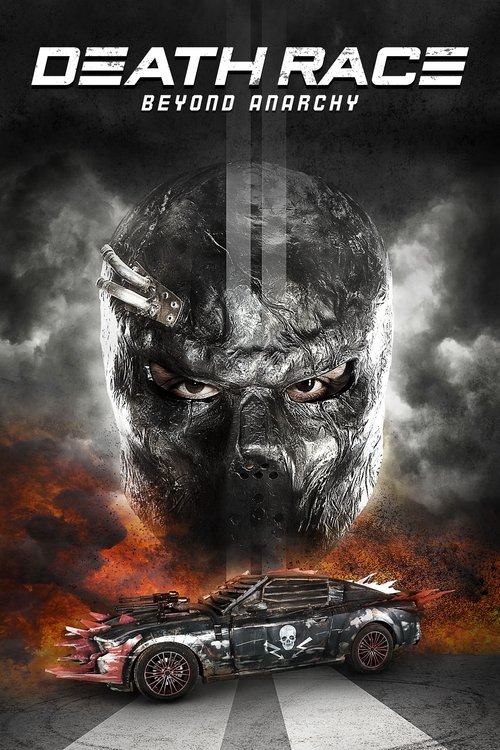
Ask Your Own Question
What is the plot?
In 1972, Jerusalem becomes the stage for a chilling event that sets the tone for the horror to come. Two priests--Jewish, Muslim, and Christian--are summoned to perform an exorcism on a woman who had died three days earlier but mysteriously returned to life. Her son recounts how she initially came back calm but soon turned violent, injuring her husband. The exorcism turns nightmarish when, in a terrifying climax, the woman sprouts leathery wings, revealing a demonic presence. A priest, in a desperate act, kills her with a derringer. This harrowing episode is narrated as the first undeniable proof of a gateway to Hell opening in Jerusalem.
Fast forward to the present day, where two young Jewish American women, Rachel Klein and Sarah Pullman, prepare for a vacation to Tel Aviv. Sarah is grappling with the recent death of her brother, a grief that shadows her mood. Her father, trying to comfort her, gifts her a pair of smart glasses--cutting-edge wearable technology that serves as the film's unique point of view. Through Sarah's glasses, the audience experiences the unfolding events with intimate immediacy, seeing everything from her perspective, complete with facial recognition and digital overlays.
On the flight to Israel, Rachel and Sarah meet Kevin Reed, an American anthropology student deeply fascinated by religious mythology. Kevin's interests span the supernatural--from Islamic jinns to the Jewish golem and undead creatures--whom he believes are manifestations of the same ancient evil. He persuades the women to detour to Jerusalem for Yom Kippur, the holiest day in the Jewish calendar, despite their original plan to stay in Tel Aviv. Sarah, drawn to Kevin's charisma, convinces Rachel to join the excursion.
Upon arriving in Jerusalem, the trio checks into a cramped hostel run by Omar, an Israeli-Arab man. The atmosphere is a mix of vibrant city life and ancient mysticism. As they explore the Old City's labyrinthine streets, they encounter a local man who claims to be King David himself. His warning is cryptic but dire: something terrible will happen on Yom Kippur, and they must leave the city. The friends dismiss him as mad, their youthful skepticism blinding them to the looming danger.
As Yom Kippur begins, the city's atmosphere shifts subtly but ominously. The narrative tension builds as Rachel, Sarah, and Kevin navigate the crowded streets, unaware that beneath the surface, a biblical apocalypse is unfolding. The smart glasses capture fleeting glimpses of unnatural shadows and eerie figures lurking just out of clear sight, heightening the sense of dread.
Suddenly, the apocalypse erupts. Winged demons--grotesque, nightmarish creatures with leathery wings reminiscent of the 1972 possessed woman--descend upon Jerusalem. The streets erupt into chaos as these entities attack and kill indiscriminately. The film's found-footage style through Sarah's glasses intensifies the horror, immersing the viewer in frantic chases and desperate escapes.
Rachel and Sarah's friendship is tested as they fight for survival. Rachel hooks up briefly with Omar, but the safety of the hostel is short-lived. The demons breach the sanctuary, slaughtering many. The film does not shy away from the carnage; the deaths are brutal and numerous, painting a picture of catastrophic destruction. The exact count of victims is vast, with the city falling into apocalyptic ruin.
Kevin, whose fascination with religious myths now becomes a grim reality, tries to make sense of the chaos. His prior research into exorcisms and dark supernatural lore proves crucial as he attempts to decipher the nature of the invasion. However, his fate is grim--amid the turmoil, he is overwhelmed and killed by the demonic forces, his death underscoring the overwhelming power of the evil unleashed.
The climax converges on Rachel and Sarah's desperate bid to survive. They seek refuge in the ancient city's sacred sites, hoping to find sanctuary or a way to close the gateway to Hell. The smart glasses reveal eerie symbols and supernatural phenomena invisible to the naked eye, suggesting a ritualistic underpinning to the demonic invasion. Despite their courage, the odds are stacked against them. The winged demons relentlessly pursue, their attacks savage and unrelenting.
In the final harrowing moments, Sarah and Rachel confront the terrifying truth: Jerusalem is indeed a gateway to Hell, and the apocalypse is not just a myth but an imminent reality. The film ends on a bleak note, with the sisters caught in the infernal chaos, their survival uncertain. The last scenes show the city engulfed in flames and darkness, the winged demons soaring overhead as the ancient evil claims Jerusalem.
Throughout the film, the narrative weaves together themes of faith, mythology, and modern technology, using Sarah's smart glasses as a lens to blend the ancient and the contemporary. The tension escalates steadily from the initial warnings to the full-scale apocalypse, with every death and revelation pushing the characters--and the audience--toward a devastating climax. The story leaves viewers with a chilling vision of a biblical nightmare unleashed in one of the world's most sacred cities, where the line between the living and the dead, the holy and the profane, is irrevocably shattered.
More Movies Like This
Browse All Movies →What is the ending?
In the ending of "Jeruzalem," the main characters face a terrifying climax as they confront the horrors unleashed in Jerusalem. The film concludes with a sense of despair and hopelessness, as the characters are unable to escape the chaos surrounding them.
As the story unfolds towards its conclusion, the tension escalates dramatically. The characters, including the main protagonist, Sarah, and her friends, are trapped in the city as supernatural forces wreak havoc. They witness the terrifying manifestations of evil, including the undead and demonic entities, which symbolize the chaos and destruction that has overtaken Jerusalem.
In the final scenes, Sarah and her friends attempt to find a way out of the city, but their efforts are thwarted by the relentless onslaught of the supernatural forces. The group experiences a series of harrowing encounters, leading to a sense of desperation and fear. One by one, they face their fates, with some succumbing to the horrors around them.
Ultimately, Sarah is left alone, grappling with the loss of her friends and the overwhelming despair of her situation. The film ends on a haunting note, with Sarah's fate left ambiguous, suggesting that the evil in Jerusalem may never truly be vanquished.
Now, let's delve into the ending in a more detailed, chronological narrative.
As the sun sets over Jerusalem, the atmosphere thickens with an ominous tension. Sarah, a young woman visiting the city with her friends, finds herself increasingly aware of the strange occurrences around her. The group, initially excited about their adventure, soon becomes engulfed in a nightmare as they realize that the city is under siege by supernatural forces.
In the penultimate scenes, Sarah and her friends, including her close friend Rachel and a local named Kevin, are desperately trying to escape the city. They navigate through the narrow, ancient streets, their hearts pounding with fear. The once vibrant city now feels like a labyrinth of terror, with shadows lurking around every corner. The friends are separated during a chaotic encounter with the undead, and Sarah's panic escalates as she calls out for Rachel and Kevin, but her voice is swallowed by the chaos.
As Sarah continues her frantic search, she stumbles upon a group of terrified locals who are also trying to escape. They share stories of the horrors they have witnessed, deepening Sarah's sense of dread. The atmosphere is thick with despair as they realize that the city is not just a physical place but a battleground for dark forces.
In a heart-wrenching moment, Sarah finds Rachel, but their reunion is short-lived. They are ambushed by a horde of demonic entities, and in a desperate attempt to survive, Rachel sacrifices herself to save Sarah. The emotional weight of this moment crushes Sarah, who is left to grapple with the loss of her friend amidst the chaos.
With her heart heavy, Sarah continues to flee, now alone and filled with a sense of hopelessness. She encounters Kevin, who is also struggling to survive. Together, they make a final push to escape the city, but the supernatural forces are relentless. They find themselves cornered in a dilapidated building, where they face the ultimate confrontation with the evil that has taken over Jerusalem.
In the climax, as the walls close in around them, Kevin is overwhelmed by the dark forces and is taken. Sarah, now completely alone, is left to confront the reality of her situation. The film culminates in a haunting scene where Sarah, filled with despair and loss, is surrounded by the chaos of the city. The camera lingers on her face, capturing the depth of her fear and sorrow as she realizes that escape may not be possible.
The final shot leaves Sarah's fate ambiguous, suggesting that the evil in Jerusalem may continue to thrive, and the cycle of horror may never truly end. The screen fades to black, leaving the audience with a chilling sense of uncertainty about what lies ahead for Sarah and the city itself.
Is there a post-credit scene?
The movie "Jeruzalem," produced in 2016, does not have a post-credit scene. The film concludes its narrative without any additional scenes or content after the credits roll. The story wraps up with the main characters facing the dire consequences of their experiences in Jerusalem, leaving the audience with a sense of closure regarding the events that transpired throughout the film.
What happens to the main characters during their visit to Jerusalem?
During their visit to Jerusalem, the main characters, a group of friends including Sarah, Kevin, and their friend, experience a series of terrifying events. They explore the city, but their adventure takes a dark turn when they inadvertently unleash a supernatural force tied to the city's ancient history. As they try to escape the chaos, they face various horrors, including demonic entities and the collapse of their friendship under pressure.
How does Sarah's character evolve throughout the film?
Sarah starts as a curious and adventurous young woman eager to explore Jerusalem with her friends. However, as the supernatural events unfold, her character is tested. She transitions from being carefree to feeling a deep sense of fear and responsibility for her friends' safety. Her emotional state shifts from excitement to desperation as she confronts the horrors around her, ultimately leading her to make difficult choices to protect those she loves.
What role does the ancient curse play in the story?
The ancient curse is central to the plot of Jeruzalem. It is revealed that the city is haunted by a demonic presence that is awakened by the characters' actions. This curse manifests in terrifying ways, leading to chaos and violence. The characters must confront the reality of the curse as they try to survive, and it serves as a catalyst for their fears and the breakdown of their relationships.
How do the characters react to the supernatural occurrences in Jerusalem?
The characters initially react with disbelief and skepticism to the supernatural occurrences. As strange and terrifying events unfold, their reactions shift from curiosity to panic. Sarah, in particular, struggles to maintain her composure as she witnesses the horrors around her. The group's dynamics change as fear takes hold, leading to arguments and blame, ultimately fracturing their friendships as they confront the reality of the situation.
What is the significance of the location settings in the film?
The location settings in Jeruzalem are significant as they enhance the film's atmosphere and themes. The ancient and historical backdrop of Jerusalem adds a layer of depth, contrasting the characters' modern lives with the city's rich, dark history. The claustrophobic streets, the eerie ruins, and the iconic landmarks become a character in themselves, amplifying the tension and sense of dread as the characters navigate both the physical and supernatural dangers of the city.
Is this family friendly?
"Jeruzalem," produced in 2016, is not considered family-friendly due to its intense themes and graphic content. Here are some potentially objectionable or upsetting aspects that may affect children or sensitive viewers:
-
Graphic Violence: The film contains scenes of intense violence, including attacks by supernatural entities, which may be disturbing to younger audiences.
-
Horror Elements: There are numerous jump scares and unsettling imagery that contribute to a tense atmosphere, which could be frightening for children.
-
Death and Gore: The depiction of death, including blood and gore, is prevalent throughout the film, which may be upsetting for sensitive viewers.
-
Supernatural Themes: The film explores themes of possession and the supernatural, which may be unsettling for some audiences, particularly those who are sensitive to horror tropes.
-
Emotional Distress: Characters experience significant fear, panic, and despair, which may resonate negatively with younger viewers or those who are sensitive to emotional turmoil.
Overall, the film's horror elements and graphic content make it more suitable for mature audiences.




























